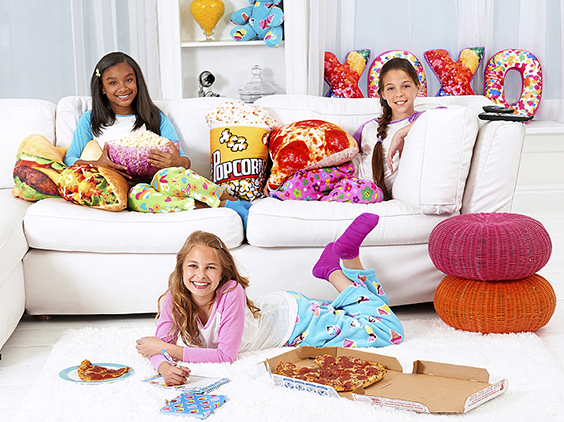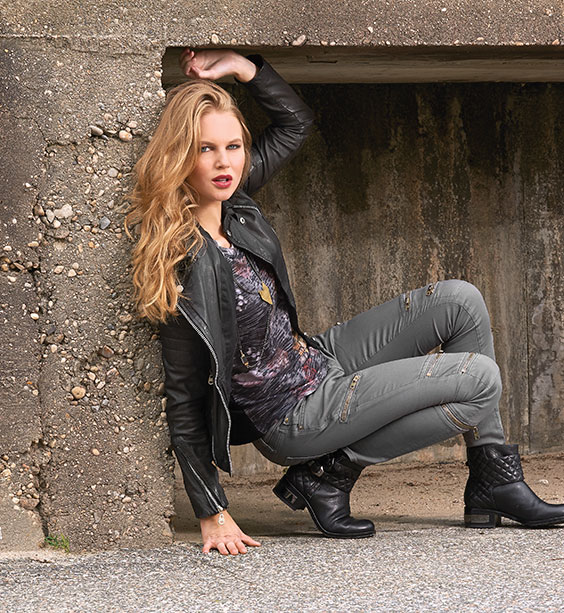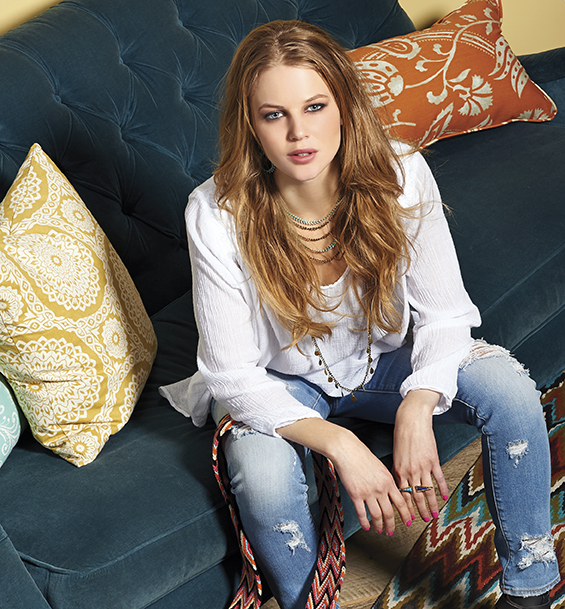Every photographic image tells a story; and like all stories, some are better than others — possessing stronger characters, more intriguing settings, and even more engaging plot lines, implied by the placement of props as clues. To reinforce this creative notion for a moment, let’s perform a mental exercise.

Conjure up a memorable photograph or two you’ve seen recently in print or online; maybe it’s one you saw a while back, which has managed to exert staying power in your brain. Preferably, it’s a photograph taken for the fashion industry, where visual storytelling is everything. Do you have it? Can you see it? Ask yourself: What is it about this image that arrested you most? The model, the mood, or the merchandise showcased? If it has remained in your mind’s eye for this long — in spite of the countless other images that have bombarded your brain since — then undoubtedly, it possessed a special blend of all three.
Arresting Memorability
Succeeding in this way — achieving the mother load of all marketing goals: arresting memorability — is the biggest challenge a photographer will encounter when shooting for the fashion industry. Yes, of course, one needs amazing gear, a powerhouse studio, a proven staff, and all manner of versatile lighting equipment, filters, and effects, especially when on location. That’s a given. All this, combined with invaluable knowhow of the tips and tricks of the trade, will help any team yank out the wrench or two that inevitably jams the works.
But beyond productivity and efficiency lies a skillset that’s essential for more than just “getting the shot,” but for creating image magic, particularly when shooting designer goods: fashion, fragrances, cosmetics, and jewelry. That skillset lies in orchestrating the oh-so-delicate visual balance between the powerful and individual dynamics involved in any such commercial shoot: the look of the models selected, the mood that the art directors wish to create, and the merchandise being photographed.

In the best of shoots, these forces can seem perfectly and even organically aligned, and the story line just seems to flow; however, there are shoots where these energies not only don’t cooperate, but can seem diametrically opposed. It’s the photographer’s job, then, to pull the reigns and exert visual control to ensure that all forces bend to the greater good: the championing of the brand.
The Brand is Everything
In commercial photographic storytelling, the brand is everything: the arc, the climax, and the moral of the story; the ultimate takeaway. The seasoned fashion photographer understands this, and when working with clients, art directors, models, set designers, prop masters, gaffers — everyone! — he or she instinctively perceives that the merchandise most rule the shot. However, while all other elements rank subservient to this essential point of focus, the merchandise itself should never be so overpowering as to mute the supporting elements that help bring it to life; hence, the need to achieve that special balance.
Set design, for example, whether in-studio or on-location, must always establish time and place. Lighting, special effects, and point-of-view must conspire to create the mood. The model’s body language and facial expressions must whisper unspoken words. And at the very center of it all — even when purposely positioned off center — the merchandise, and the spirit of its brand, must appear irresistible to the viewer, because it is the hero or heroine of the story. As such, the photographic image must seduce the viewer to desire that blouse, suit, or killer dress, not only for what it is, but also for what it stands for: the station, style, or sensibility it reflects.

Relation and Aspiration
Portraiture is about people, power, and personality. Product photography, for print or Web, is about detail, form, and function. Without question, these are skillsets unto themselves, and in their own way, these images also convey ideas. But fashion photography requires something more: the ability to capture characters, place them in a scene, and tell an engaging story — whether a direct, abstract or coyly nuanced tale — and one where the targeted viewer is invited to play his or her role.
At the end of the day (or shoot!) fashion photography is all about relation and aspiration — the desire for the viewer to be or want to be more.
Capture that photographic story right… and watch how your brand becomes a bestseller.
